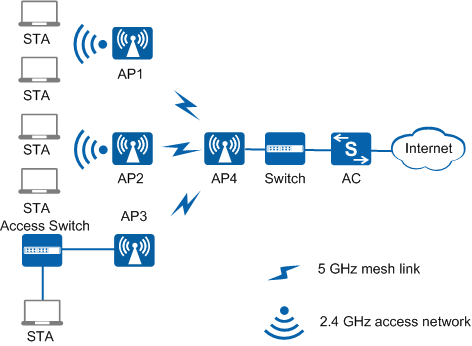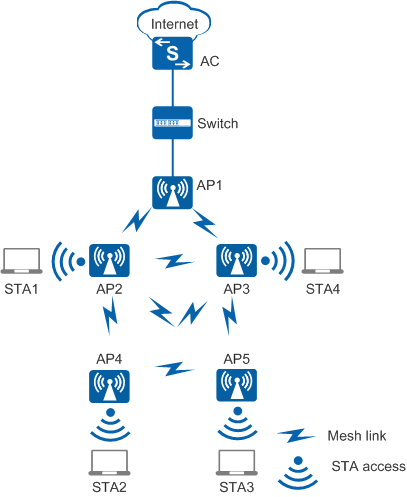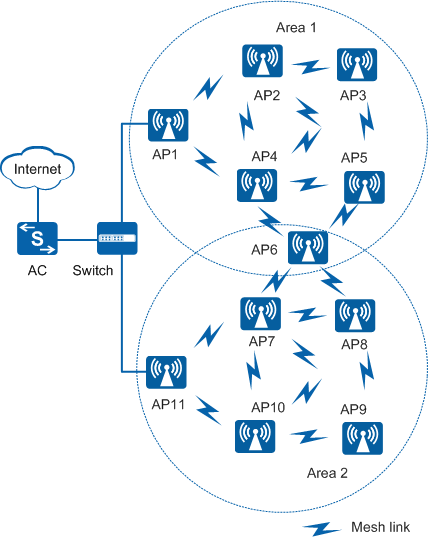Application Scenarios for Mesh
Mesh Wireless Bridging
In Figure 1, AP1 to AP3 provide network access service for wired and wireless users. The three APs, however, cannot access the Internet in wired mode because of geographical or environmental restrictions. AP1 to AP3 can work with AP4 to build a WMN so that wireless users can connect to the Internet.
WMN with One MPP
In Figure 2, AP2 to AP5 provide network access service for wireless users, and AP1 provides wired access to the Internet. AP1 to AP5 are fully meshed to establish a secure, auto-configured, and self-healing outdoor WMN, which facilitates fast and cost-effective WLAN deployment in outdoor environment where cabling is difficult.
WMN with Multiple MPPs
In Figure 3, AP1 and AP11 provide wired access to the Internet. AP2 to AP5 provide network access service for wired and wireless users in Area 1, and AP7 to AP10 provide network access service for wired and wireless users in Area 2. AP6 resides in the overlapping area between Area 1 and Area 2.
An MPP and MPs that establish mesh links with the MPP use the same wireless channels. If network access service needs to be provided for different areas, multiple MPPs need to work in different channels to prevent MPs from preempting wireless channels and improve coverage performance. Each MP can select the MPP with the minimum hops from the MP as the gateway to connect the wired network.


